3.1 Introduction
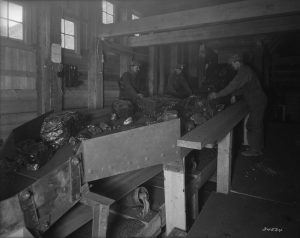
The Industrial Revolution was well underway in Britain and the northeastern United States by 1867. The systematized production of manufactured goods — woolen or cotton garments or iron tools — was made possible by a reorganization of labour, from independent and cottage-based production to one where the work was produced collectively, and increasingly with the use of machinery. The creation of low-valued manufactured products required the development of new systems of transportation. The early (or “first”) Industrial Revolution generated a parallel revolution in infrastructure that included canals, railways, and shipping.
Canada’s Industrial Revolution piggybacked on that of its neighbour and Britain. However, the most rapid transition of the Canadian economy came after 1850, and accelerated through the last half of the 19th century. Confederation — and the resulting creation of a common financial system that included a shared currency and mint — was, in fact, an enabling step in industrializing British North America. It created an open colonial marketplace without tariff barriers, facilitated the movement of investment capital, and superimposed a modern freight-handling capacity that realigned trade from north-south to east-west. Victorian Canada was, in every sense, industrializing Canada.

Industrial British North America
In the 1860s, industry was breaking out all over. New Brunswick — dominated by forest industries and shipbuilding — was, on a per capita basis up until 1871, only a little less industrialized than Ontario and Quebec. Nova Scotia’s industry was distinctively divided between the metal and coal industries of Cape Breton, and the textile mills and sugar refineries in the western part of the province.[1] Vancouver Island, with its coal mines at and around Nanaimo and the vertically-integrated heavy industries that included Royal Navy shipyards in Esquimalt and chain-making in Victoria, was another outpost of industrialization.
These parallel developments were not happenstance. By keeping local land prices high, the colonial and then provincial governments of British Columbia demonstrated a desire for wage-earning workers rather than farm settlers — a striking signal that industry, not agriculture, was central to their vision. The engagement of the state in the building of an industrial order is itself part of the suite of ideas associated with modernity — a concept pursued throughout this text. Industrialism, the term used to describe the new economic order emerging in the late 19th century, was thus more than a pattern of like practices and institutions; it was something to which governments, investors, and workers were all striving.
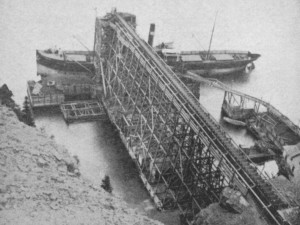
The economics of industrialization are staggering insofar as they require the movement of capital, raw materials, personnel, and products across huge distances. Industry requires, too, the mobilization, training, housing, and discipline of a workforce with little to no prior exposure to industrial systems. The pre-Conquest iron forges at Saint-Maurice, near Trois-Rivières, depended on fuel and ore — and labour — that could be obtained locally. By 1890, industries in Central and Maritime Canada were using iron ore from Labrador and Newfoundland’s Bell Island; coking coal from Cape Breton was finding its way to Ontario; and workers in Canadian industry were migrating from one province to another, from coast to coast. Workers were being recruited from industrializing Lancashire and Yorkshire, Wales, Lowland Scotland, and Germany. Industrial workers were also coming to Canada from rural and non-industrialized corners of Italy, Ireland, Hungary, and China. The intensification of mechanized, and then automated, work ensured that peasant populations whose home countries were still mostly feudal would be thrust directly onto the cutting edge of industrialization. It also meant that untrained Canadian labour — specifically children — would find themselves very literally at the coalface.
In addition to personnel, industry requires energy. In 1867, the dominant sources of energy grew in forests or walked on four legs. Waterpower had made some inroads, particularly in rural areas where waterwheels could take advantage of local rapids. At Lachine, Quebec, the canals provided power as well, driving the Montreal area’s earliest industries. Bringing energy sources into city centres, however, where other resources could be assembled, posed a challenge; a challenge that was overcome by following Britain’s lead and adapting the new steam-power technologies.Within a very short time period, there was a shift in industrial and urban Canada from organic and water-based power sources to fossil fuels.
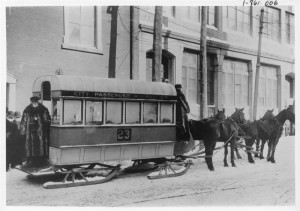
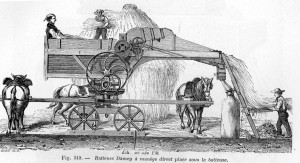
This change in the energy economy had the important advantage in Canada of diminishing the impact of seasonality. Waterwheels were powerful innovations and their application to the increased use of machinery in production, was literally revolutionary. Nevertheless, watercourses freeze up in Canada, which meant an interruption in power supply and in the transportation of necessary supplies along rivers. The transition from organic to inorganic energy sources changed all that. Factories could work year-round and steam-powered engines could be used to move larger and larger quantities of raw materials from source to market in shorter time. Applied to land-based transportation along rails, steam and coal could free much of Canadian manufacturing from the dictatorship of winter.
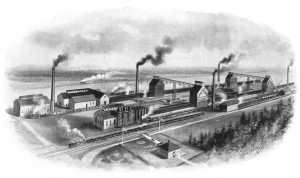
Once factories began operating throughout the four seasons, the possibility arose for workers to take on wage-labour full time. The increasing use of cash in the Canadian economy was one attraction to doing so. Many agricultural workers went into industrial labour as a temporary measure, a step toward saving enough money to purchase a farm of their own. This was also true of immigrant industrial workers who imagined their future in Canada as independent landowners.[2] That transitional stage never fully ended, as rural populations in the 21st century continue to augment farm income with wage-labour. In the 19th century, however, limits on transportation made such moves increasingly permanent. By the 1870s wage-labour in many regions matched agriculture as a practical strategy for survival. The population of ready workers increased and expanded across Canada. From 1861-71 the labour force grew by about 15% and then, from 1871-81 by 26%. Its growth slowed thereafter to a still-respectable 21% and then 11% in each of the two decades that followed. [3] Labour inputs, however, are only part of the equation.
The introduction of machinery, and especially steam-powered machinery, was transformative. Output could be increased dramatically, quality could aim for (and sometimes achieve) reliable standards, and the skill sets needed to do a particular job changed from that of a master craftsman to those of someone able to keep up with the metal and wood machinery. The cumulative effect was to bring down wages while raising productivity and de-skilling the workforce. New skills emerged — particularly those associated with maintaining machinery — but shoe production, for example, went from being a handicraft associated with years of apprenticeship and journeyman study, to something that was done by children. A good example is Lawson’s, a tailoring business in Hamilton, that introduced 10 sewing machines in the 1860s. This led to the departure of 71 of their 100 skilled male tailors, and their replacement with 69 women (who were regarded, rightly or wrongly, as unskilled).[4] Mechanization — and, in the 20th century, automation — would change the way work is done, but its spread was entirely dependent on the ability of capital to invest in emerging technologies. This process of intensified capital inputs on the shop floor would accelerate 30 years after Confederation.
The Second Industrial Revolution
Despite significant changes in the orientation and character of the economy until the mid-1890s, growth was not outstanding. An important measure of the health of Canada’s economy is its population and, rather remarkably, from 1861-1901 Canada was a net exporter of people. The American economy was expanding more rapidly and as land and employment opportunities arose, it served as a magnet for thousands of Canadians. Additionally, many of the immigrants to Canada during this period proved to be just passing through. On balance, then, more people left than arrived. From a historian’s perspective, this is a sure sign that industrialization in the new Dominion provided fewer opportunities, or less competitive opportunities, than agriculture in the western plains of North America. This was not yet a consumer-led economy so the net loss of population until 1901 did not mean the simultaneous loss of household markets, at least not in the same way it might in the mid-20th century. It did manifest a shortage of labour resources, however, in some corners of the country. As the Maritime’s economy began to seize up in the 1870s and 1880s, for example, out-migration was another factor in driving investment to more populous centres in Ontario and southwest Quebec.
In the 1890s, there were several important advances in technology and technique that gave industrialization a new shape. The foremost of these was the development of the Bessemer system for manufacturing steel. Vastly stronger and cheaper than earlier forged metals, this innovation propelled the steel industry and everything that utilized steel. As well, it contributed to the further growth of coking coal production and iron mining and the building of infrastructure to transport these raw materials to processing points. The establishment of the Nova Scotia Steel and Coal Company at New Glasgow in 1882 was followed by the Dominion Coal Company at Glace Bay 11 years later. The Dominion Iron And Steel Company opened in Sydney in 1900, and the Nova Scotia Steel and Coal Company opened at Sydney Mines the same year. All of these developments reflect the accelerating transformation of the industrial order in Canada as a whole and the rise of international markets for output. It also points to a change in industrial capitalism: whereas earlier industrialization depended mostly upon bringing more labour to the task of producing goods, capital inputs were now rewarded. In Ontario alone, the amount of capital invested in the economy leapt from $37 million in 1871 to $175 million in 1891, rising to $595 million in 1911.[5] Machinery, reconceptualized workspaces and architecture, and metal-hulled ships that could move heavy goods at a fraction of the cost of wooden vessels all contributed to the changes associated with what is called the Second Industrial Revolution.
The change could be seen in the Canadian labour force. In 1901, the number of operatives and labourers combined (nearly 789,422) surpassed the total number of farmers and farmworkers (715,122).[6] The proportion of Canadians living on the land was still greater than that of urbanites, but, as of 1901, the number of Canadians earning an income from wages pulled ahead of those earning farm incomes. And those wage-earning workers were doing so increasingly in industries and factories that did not much resemble what existed in the 1860s.

Industrialization marked a significant departure from the pre-Confederation economy, and it brought in its wake social and economic changes that could hardly have been predicted. It was, however, part of a conscious strategy for nation-building and making economic policy. The most obvious expression of that strategic (and, yes, hopeful) thinking was the National Policy.
Learning Objectives
- Develop an understanding of the causes and contours of the Second Industrial Revolution.
- Explain the rise of a working class and describe its main features.
- Assess the main features and goals of the National Policy and its individual components.
- Discuss the ways in which age and gender shaped the historic experience of industrialization.
- Connect the phenomena of industrialization with urbanization in the pre-1914 period.
- Describe the strategies explored by working people to improve their conditions.
- Account for the rise of the first-wave of feminism.
Attributions
Figure 3.1
Coal Mining, Alberta – picking coal before same leaves on conveyor – Atlas Mine (Online MIKAN no.3351151) by Library and Archives Canada is in the public domain.
Figure 3.2
Habitant series – weaving loom (Online MIKAN no.3349488) by Library and Archives Canada is in the public domain.
Figure 3.3
The loading pier at Bell Island by Verne Equinox is in the public domain.
Figure 3.4
A horse-drawn winter tram by Tim Pierce is in the public domain.
Figure 3.5
Drawing of a horse-powered thresher by Bogdan is in the public domain.
Figure 3.6
Artist rendering of the Sydney Nova Scotia by Verne Equinox is in the public domain.
Figure 3.7
Shoe factory, Aurora, Ontario, Canada by Special Collections Toronto Public Library is used under a CC BY SA 2.0 license. This image is available from Toronto Public Library under the identifier PC-ON 65.
- Margaret R. Conrad and James K. Hiller, Atlantic Canada: A Concise History (Don Mills: Oxford University Press, 2006), 131-2. ↵
- British coal miners who moved to Vancouver Island in the late 19th century repeatedly indicated that they saw West Coast mine work as a stepping stone to independence on their own land. See John Douglas Belshaw, Colonization and Community: The Vancouver Island Coalfield and the Making of the British Columbian Working Class (Montreal & Kingston: McGill-Queen’s University Press, 2002), 161-3. ↵
- Statistics Canada, Historical Statistics of Canada, 2nd ed., F. H. Leacy, ed. (Ottawa: Statistics Canada, 1983): D498-511. ↵
- Bryan D. Palmer, Working-Class Experience: Rethinking the History of Canadian Labour, 1800-1991, 2nd ed. (Toronto: McClelland & Stewart, 1992), 87-8. ↵
- Gregory S. Kealey, Workers and Canadian History (Montreal & Kingston: McGill-Queen's University Press, 1995), 245. ↵
- Canada, Historical Statistics of Canada, 2nd ed., F. H. Leacy, ed. (Ottawa: Statistics Canada, 1983): D86-106. ↵

